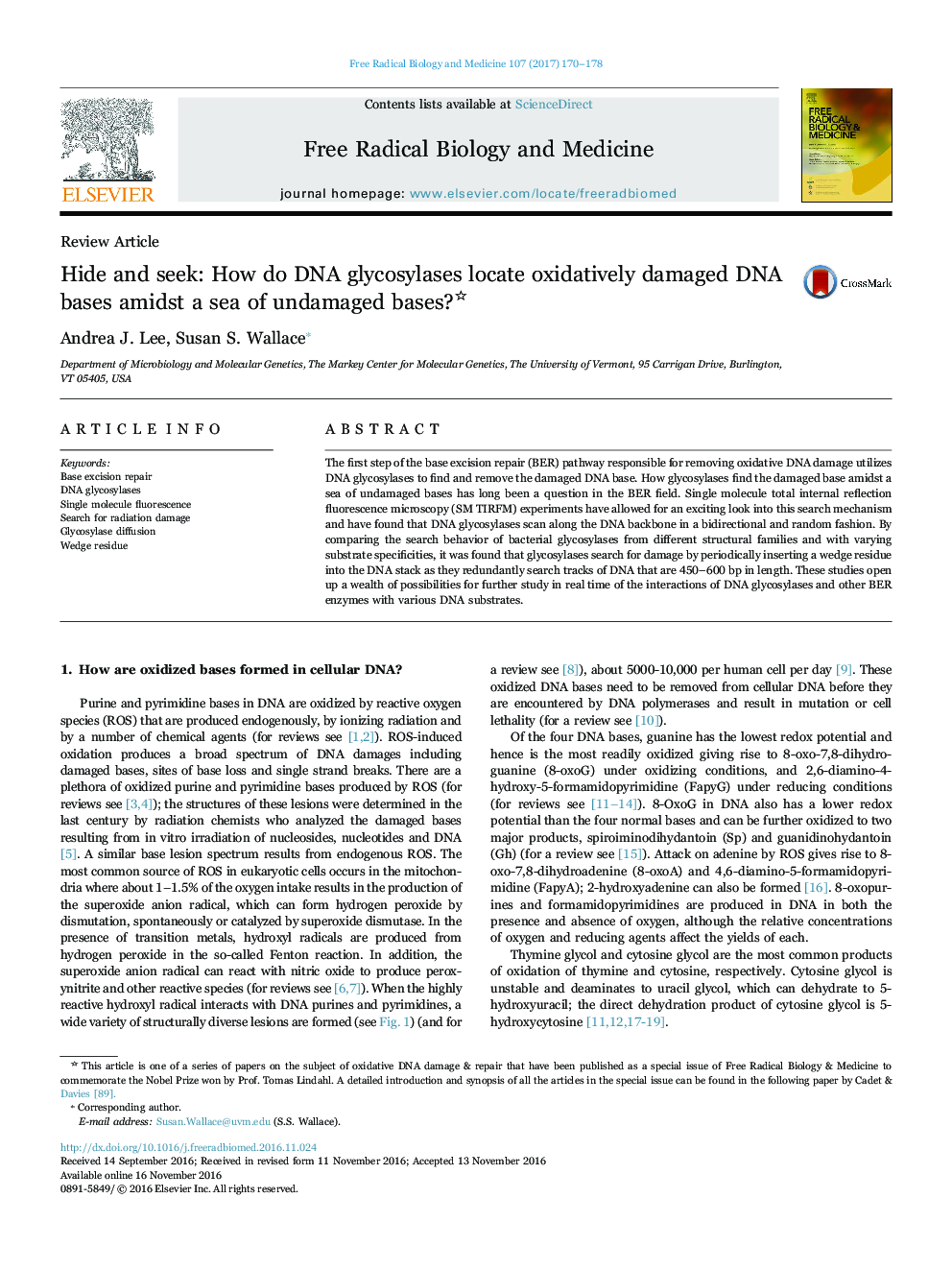| کد مقاله | کد نشریه | سال انتشار | مقاله انگلیسی | نسخه تمام متن |
|---|---|---|---|---|
| 5501817 | 1534936 | 2017 | 9 صفحه PDF | دانلود رایگان |

- DNA glycosylases bidirectionally, randomly and rotationally diffuse along DNA.
- DNA glycosylases insert a wedge amino acid into the DNA duplex to locate damages.
- DNA glycosylases stop upon encountering their substrate damage.
- TIRF microscopy has provided insights into the DNA damage search by DNA glycosylases.
The first step of the base excision repair (BER) pathway responsible for removing oxidative DNA damage utilizes DNA glycosylases to find and remove the damaged DNA base. How glycosylases find the damaged base amidst a sea of undamaged bases has long been a question in the BER field. Single molecule total internal reflection fluorescence microscopy (SM TIRFM) experiments have allowed for an exciting look into this search mechanism and have found that DNA glycosylases scan along the DNA backbone in a bidirectional and random fashion. By comparing the search behavior of bacterial glycosylases from different structural families and with varying substrate specificities, it was found that glycosylases search for damage by periodically inserting a wedge residue into the DNA stack as they redundantly search tracks of DNA that are 450-600Â bp in length. These studies open up a wealth of possibilities for further study in real time of the interactions of DNA glycosylases and other BER enzymes with various DNA substrates.
256
Journal: Free Radical Biology and Medicine - Volume 107, June 2017, Pages 170-178